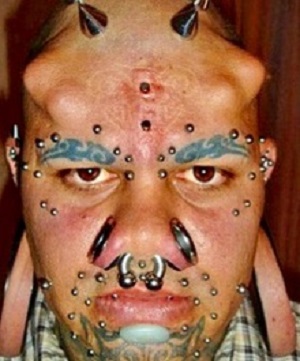 Tattoos and body piercings are an increasingly popular form of self-expression, but it is important for young people to carefully consider the consequences and potential risks associated with body modifications, according to the first clinical report on the topic published by the American Academy of Pediatrics.
Tattoos and body piercings are an increasingly popular form of self-expression, but it is important for young people to carefully consider the consequences and potential risks associated with body modifications, according to the first clinical report on the topic published by the American Academy of Pediatrics.
The AAP recommendations provide an overview of the types and methods used to perform body modifications. The clinical report details possible medical complications, which, while uncommon, should be discussed with a pediatrician.
"Tattooing is much more accepted than it was 15 to 20 years ago," lead author Dr Cora C Breuner, chair of the AAP Committee on Adolescence, said. "In many states, teens have to be at least 18 to get a tattoo, but the regulations vary from place to place. When counseling teens, I tell them to do some research, and to think hard about why they want a tattoo, and where on their body they want it."
The AAP report highlights include: while societal acceptance of tattoos and piercings has increased, there may still be repercussions. In a 2014 survey, 76% of 2,700 people interviewed said they believed that a tattoo or piercing had hurt their chances of getting a job; the rate of complications from tattoo placement is unknown, but believed to be rare. The most serious complication from any form of body modification is infection; before getting a tattoo or piercing, make sure the salon is sterile, clean and reputable. The facility should be regulated by the state and provide clients with information on how to care for the area that has been tattooed or pierced afterward. The facility should practice infection control just like at the doctor's office; scarification, which involves cutting, burning or branding words or images into the skin, is not as highly regulated as tattooing or piercing and is prohibited in some states; and someone considering a tattoo should make sure that their immunizations are up to date and that they are not taking any medication that compromises their immunity.
The AAP offers guidance for paediatricians on how to distinguish typical body modification from more dramatic or intense efforts to harm oneself, called non-suicidal self-injury syndrome. The syndrome, which includes cutting, scratching or burning oneself, is a more impulsive or compulsive action that is associated with mental health disorders. "In most cases, teens just enjoy the look of the tattoo or piercing, but we do advise them to talk any decision over with their parents or another adult first," said Dr David Levine, co-author of the report. "They may not realise how expensive it is to remove a tattoo, or how a piercing on your tongue might result in a chipped tooth." Laser removal of tattoos can range from $49 to $300 per square inch of treatment area, according to the report.
"Reputable tattoo parlours and piercing salons should provide a long list of do's and don'ts on how to care for the area that was worked on, and what signs might indicate a problem," Breuner said. "These services have come a long way, safety-wise, but it's best to proceed with caution."
Abstract
Tattoos, piercing, and scarification are now commonplace among adolescents and young adults. This first clinical report from the American Academy of Pediatrics on voluntary body modification will review the methods used to perform the modifications. Complications resulting from body modification methods, although not common, are discussed to provide the pediatrician with management information. Body modification will be contrasted with nonsuicidal self-injury. When available, information also is presented on societal perceptions of body modification.
Authors
Cora C Breuner, David A Lev
[link url="https://www.sciencedaily.com/releases/2017/09/170918090653.htm"]American Academy of Pediatrics material[/link]
[link url="http://pediatrics.aappublications.org/content/early/2017/09/14/peds.2017-1962"]Pediatrics abstract[/link]
